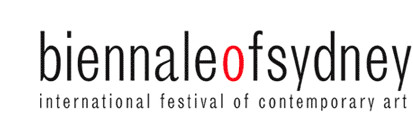15th BIENNALE OF SYDNEY 2006
08 Jun - 27 Aug 2006
Zones of Contact
8 June - 27 August 2006
Artistic director:
Charles Merewether
Artists:
Hamra Abbas
Ai Weiwei
Navjot Altaf
Ghada Amer
Mamma Andersson
Alfredo Juan Aquilizan &
Maria Isabel Gaudinez-Aquilizan
Fikret Atay
The Atlas Group / Walid Raad
Miroslaw Balka
Rebecca Belmore
Zarina Bhimji
Stella Brennan
Elina Brotherus
Cao Fei
Chen Chieh-jen
Olga Chernysheva
The Conch: Directed by
Nina Nawalowalo
José Damasceno
Călin Dan
Tacita Dean
Evelīna Deičmane
Sebastián Díaz Morales
Biljana Djurdjević
Meschac Gaba
Ghazel
Antony Gormley
Julie Gough
Brett Graham &
Rachael Rakena
Shilpa Gupta
Laurent Gutierrez &
Valérie Portefaix
Dmitry Gutov
Mona Hatoum
Diango Hernández
Emily Jacir
Šejla Kamerić
Amar Kanwar
Hassan Khan
Elena Kovylina
Ruark Lewis
Liu Xiaodong
Sharon Lockhart
Rafael Lozano-Hemmer
Lu Qing
Djambawa Marawili
Marepe
Julie Mehretu &
Stephen Vitiello
Almagul Menlibayeva
Hayati Mokhtar &
Dain-Iskandar Said
Daido Moriyama
Rabih Mroué
Tomoko Mukaiyama
Ujino Muneteru
Katrīna Neiburga
Tom Nicholson
Rose Nolan
Damián Ortega
Adrian Paci
Milenko Prvacki
Tawatchai Puntusawasdi
Qin Yufen
Raqs Media Collective
Jeebesh Bagchi
Monica Narula
John Reynolds
Liisa Roberts
Liza Ryan
Raeda Saadeh
Anri Sala
Jayce Salloum
Ruti Sela &
Maayan Amir
Anas Al-Shaikh
Nurit Sharett
Ranjani Shettar
Mladen Stilinović
Alia Syed
Tabaimo
Kei Takemura
Fiona Tan
Kai Syng Tan
Imants Tillers
Milica Tomić
Mürüvvet Türkyilmaz
U Sunok
Lidwien van de Ven
Savanhdary Vongpoothorn
Yelena Vorobyeva & Viktor Vorobyev
Akram Zaatari
The concept "Zones of Contact" forms the framework and organising principle of the 2006 Biennale of Sydney, which will include a range of artists from around the world practising in all forms of the visual arts.
The focus of the 2006 Biennale will be as much on the subject of "zones" as that of "contact" - emphasizing the occupation and mapping of spaces such as territories, settlements, homes, dwellings, and zones in-between. 'Zones of contact' constitute a threshold to the global because the encounter always begins from a point of view and experience that is local. There will be some 80 artists from more than 40 countries that brought together explore how contemporary art continues to provide a contemporary embodiment and articulation of the colonial era and histories of conflict, underdevelopment, as much as reflect the increasing transcultural flows produced through globalization and growing cosmopolitanism of metropolitan centers across the world.
The Biennale of Sydney '06 concept of 'zones of contact' is not acting as a surrogate for visual anthropology or cultural history per se, nor does it suggest some natural state that precedes the technology of representation or viewing. Rather, the concept embraces spheres of engagement or entanglement with the world, and art's materiality becomes both the form of articulation and medium of perception. Hence, 'zones of contact' encompasses not only a spatial dimension, i.e. borders, frontiers, intersections, but equally refers to both a temporal and sensuous mode of experiencing the world, that is, an elaboration of issues concerning the affect and sensate body, everyday life and the formation of the subject. It is, in other words, to open the discussion to a range of contemporary art whether it be at the immediate and intimate level of the individual or social body and the world at large, with its thresholds of sameness and difference, the gaps between, the thresholds, horizons and absences that constitute both the legacy of history and experience of the present. From this perspective, 'zones of contact' entails the tactility of the image that goes beyond the practices of observation or interventions within the field of the documentary. The encounter with art becomes a field of sensate knowledge, an imaginary of images that guides us in our encounter with the world. Within this framework art lives and gathers meaning by way of memory and reception like a membrane that acts as a mediating transmitter or tuning fork between its subject and viewer.

